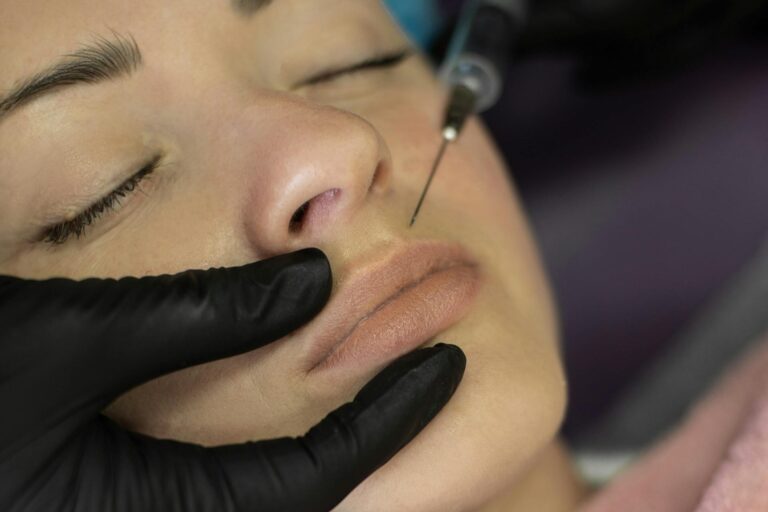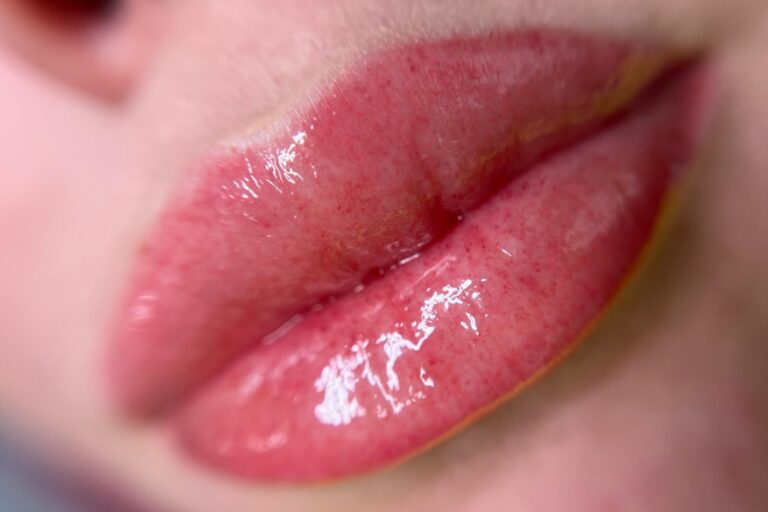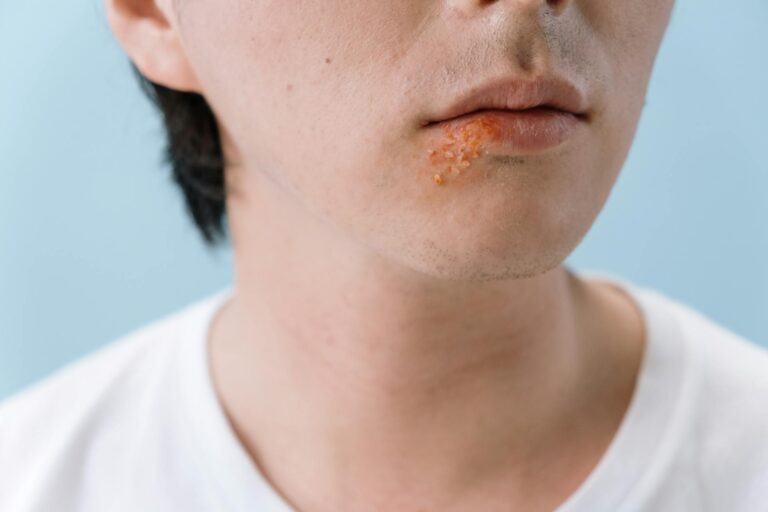
Lip fillers have gained significant popularity as a cosmetic treatment, providing individuals with an opportunity to enhance the shape and volume of their lips. But what are lip fillers, and why are so many people choosing to use them?
This article delves into the various types of lip fillers available, key considerations to keep in mind before undergoing the procedure, and the potential risks associated with it. Additionally, it offers guidance on selecting a qualified provider in the UK and outlines what one can expect during and after the treatment.
Whether you are curious about the procedure itself, interested in alternatives, or wondering how long the results will last, this guide aims to divulge everything to know about lip fillers before treatment in the UK.
What Are Lip Fillers?

Lip fillers have become a widely sought-after cosmetic procedure for individuals looking to enhance their lips or achieve a fuller pout.
These fillers are typically composed of hyaluronic acid, which can significantly boost volume and reshape the lips, thereby improving facial symmetry and enhancing overall facial aesthetics.
As a non-surgical option, lip augmentation has gained considerable popularity within the beauty industry, especially in aesthetic clinics that emphasize patient safety and deliver high-quality results.
Why Do People Get Lip Fillers?
Individuals opt for lip fillers for a range of reasons, encompassing both aesthetic aspirations and emotional considerations related to their appearance.
Some may wish for a more defined lip shape or a fuller pout to achieve better facial symmetry, while others aim to restore volume that may have diminished due to ageing or other factors.
This rising trend in beauty treatments illustrates the significant impact of social media and personal confidence, as many people feel a sense of enablement through the transformations in their appearance.
What Are The Different Types Of Lip Fillers?
There are several types of lip fillers available on the market, with hyaluronic acid being the most commonly used option due to its compatibility with the body and ability to deliver natural-looking results.
Popular brands like Juvederm and Restylane each offer unique formulations and benefits, which can be quite helpful for individuals looking to enhance their lips. Understanding the various types of dermal fillers can enable people to make informed decisions when considering non-surgical lip enhancement options.
Beyond hyaluronic acid, there are other alternatives such as collagen-based fillers. These options provide a different texture and can create a more subtle enhancement but may require more frequent touch-ups to maintain the desired look.
An emerging trend in the field is the use of volumising fillers, specifically designed to create a fuller appearance while lasting longer, making them an attractive choice for those seeking more significant enhancements.
Recent advancements in lip filler technology, including micro-droplet techniques, allow for a more customised and precise application that can enhance the natural shape of the lips.
When selecting a filler, it is crucial for individuals to consider their desired aesthetic, the longevity of the product, and any potential allergies to specific ingredients. Consulting with a qualified professional is essential to achieving one’s cosmetic goals effectively.
What To Consider Before Getting Lip Fillers?
Before making the decision to have lip fillers, it is important to consider several factors that can influence both the outcome and safety of the procedure.
An informed consent process is essential; potential clients should fully understand the risks, treatment costs, and what to expect both during and after the lip augmentation.
Furthermore, discussing one’s medical history and any potential contraindications with qualified practitioners can greatly enhance the patient’s safety and satisfaction with the results.
What Are The Risks And Side Effects Of Lip Fillers?
As with any cosmetic procedure, it is important to recognise that lip fillers come with potential risks and side effects that deserve careful consideration. Common side effects may include swelling, bruising, and, in some instances, allergic reactions to the dermal fillers. Understanding these risks is essential for maintaining patient safety and achieving a satisfactory aesthetic outcome.
To effectively manage swelling and bruising after the treatment, patients are advised to apply ice packs intermittently during the first 24 hours, which can help reduce inflammation and discomfort. Additionally, it is wise to avoid strenuous exercise and excessive sun exposure for a few days following the procedure.
Choosing a qualified practitioner is crucial, as their expertise can significantly reduce the likelihood of complications and improve overall satisfaction with the results. Ensuring that the injector is certified and experienced can make a notable difference in achieving the desired lip fullness while minimising adverse effects, ultimately leading to a more positive experience.
What Are The Precautions To Take Before Getting Lip Fillers?
Taking the right precautions before getting lip fillers is essential for enhancing patient safety and achieving the desired results. It is advisable for individuals to seek pre-treatment guidance from qualified practitioners. During this discussion, important factors such as medical history, any contraindications, and realistic expectations regarding the longevity of the filler and its aesthetic outcomes should be thoroughly addressed.
Moreover, it is vital for individuals to develop a comprehensive checklist of pre-treatment precautions. Here are a few key considerations:
- Avoiding blood thinners, such as aspirin and certain anti-inflammatory medications, can significantly reduce the risk of bruising and swelling.
- Ensuring proper hydration before the appointment not only helps maintain skin elasticity but can also contribute to achieving smoother, more even results.
- Preparing for the consultation by compiling questions and concerns fosters transparency. This allows for a thorough understanding of the procedure, potential side effects, and aftercare requirements, ultimately ensuring that individuals feel informed and confident as they move forward.
How To Choose A Good Lip Filler Provider In The UK?

Selecting a reputable provider for lip fillers in the UK is essential for ensuring both safety and the achievement of desired aesthetic outcomes.
Individuals considering this treatment should seek qualified practitioners who possess specialised training and work in accredited aesthetic clinics.
It is also important to prioritise a transparent consultation process, where treatment options, costs, and individual goals can be thoroughly discussed.
What Qualifications Should A Lip Filler Provider Have?
A qualified lip filler practitioner should have the necessary qualifications, including medical training in aesthetic procedures, to ensure ethical practices and proper patient care. They must have received specialised training in injection techniques and possess a solid understanding of lip anatomy to achieve optimal results while minimising risks.
Additionally, a robust background in medicine or nursing is crucial, as it ensures that the practitioner is knowledgeable in both the science and artistry behind cosmetic enhancements. It is advisable to seek out professionals who hold certifications from recognised aesthetic boards or associations, as these credentials indicate a commitment to ongoing education and adherence to high professional standards.
This continuous education keeps practitioners informed about the latest techniques and products, while also enhancing their understanding of patient safety protocols and potential complications. Ultimately, this ensures that clients receive care that is both informed and compassionate.
What Are The Reviews And Before/After Photos Of The Provider?
Examining patient reviews and before-and-after photos can provide potential clients with valuable insights into the results they might expect from a lip filler provider. Positive reviews and well-documented transformations can reassure individuals of the provider’s skill and the satisfaction of previous clients.
To enhance this research process, it is essential for individuals to effectively utilise online resources and gather community feedback. By exploring specific testimonials, potential clients can gain an understanding of others’ experiences, identifying common themes related to results, communication, and aftercare.
The before-and-after photos should not only highlight successful procedures but also align with the provider’s overall aesthetic philosophy, assisting clients in determining if their vision aligns with that of the practitioner.
Engaging in discussions within community forums can illuminate personal stories and unique insights, ensuring a well-rounded perspective before making a decision.
What Are The Costs And Payment Options?
Understanding the costs associated with lip fillers is crucial for effective budgeting and making informed treatment decisions. The price of treatment can vary based on factors such as the provider, the type of fillers used, and the specific procedures involved. Therefore, it is essential to seek clarity on pricing during the consultation process.
Several factors contribute to estimating the total expenses, including consultation fees, which are usually charged for the initial assessment and discussion of desired outcomes.
Treatment packages may provide bundled services at a more favourable rate compared to selecting individual services, so it would be prudent to inquire about these options. Additionally, it is important to consider any potential extra costs, such as follow-up appointments or touch-up treatments that may be necessary after the procedure.
To ensure a comprehensive understanding of the financial aspects, individuals should feel comfortable discussing their budget concerns openly with their provider. Asking detailed questions about all possible costs upfront can help avoid surprises later on.
What Are The Safety Measures Taken By The Provider?
Safety measures are crucial when selecting a provider for lip fillers, as they can greatly influence the overall treatment experience. A responsible lip filler provider should prioritise patient safety by adhering to ethical practices, maintaining a sterile environment, and offering follow-up appointments to monitor healing and results.
Plus these essential aspects, reputable clinics typically conduct thorough patient screenings to assess individual health profiles and identify any contraindications. This proactive approach aids in recognising potential risks before moving forward with the procedure.
The administration of local anaesthetic not only enhances comfort during the treatment but also demonstrates the provider’s commitment to ensuring a gentle experience.
Moreover, ongoing patient education is vital throughout the treatment journey. This ensures that individuals are well-informed about their desired outcomes and any associated risks, enableing them to feel comfortable and engaged as active participants in their care.
What To Expect During The Lip Filler Treatment?

During the lip filler treatment, clients can anticipate a procedure that is generally quick, usually lasting between 30 and 60 minutes. The exact duration may vary based on the desired results and the techniques employed.
Qualified practitioners will begin by applying a numbing cream to help minimise any discomfort. They will then proceed to carefully inject the fillers, keeping the patient’s aesthetic goals and unique lip anatomy in mind to achieve optimal results.
What Are The Steps Involved In The Procedure?
The lip filler procedure involves a well-structured approach that begins with a comprehensive consultation. During this initial meeting, clients have the opportunity to discuss their aesthetic goals and provide their medical history. This information is essential for the practitioner to plan the treatment effectively, including selecting the most suitable injection techniques to achieve optimal volume enhancement and lip shape.
Preparation plays a critical role in this process, as it sets the stage for a successful treatment. Practitioners often take photographs to facilitate before-and-after comparisons and may discuss various types of fillers available to help clients attain their desired look.
Once the consultation is complete and comfort is prioritised, a local anaesthetic is administered to minimise any potential discomfort—a vital step in the procedure. After the area is numbed, the actual injection occurs, with the practitioner carefully administering the filler in specific locations to achieve natural-looking results.
Throughout this entire process, open communication remains essential. Clients are encouraged to voice their feelings and any discomfort they may experience, allowing for adjustments to be made as necessary to meet their expectations effectively. This collaborative approach significantly enhances the overall experience and satisfaction with the final outcome.
How Long Does The Treatment Take?
The duration of a lip filler treatment session generally ranges from 30 to 60 minutes, depending on the complexity of the procedure and the desired results. This timeframe includes both the consultation process and the actual injections, ensuring that the client feels comfortable and well-informed throughout the experience.
Several factors can significantly affect the overall duration of the treatment. For instance, the number of injections required may vary based on the volume the individual wishes to achieve and the specific areas targeted.
More intricate procedures that involve multiple zones, such as the lips and their surrounding areas, may necessitate additional time to ensure optimal results. Follow-up appointments are also an essential part of the treatment journey, as they provide an opportunity for the practitioner to evaluate outcomes, address any concerns, and make necessary adjustments to enhance both satisfaction and effectiveness.
What Are The Post-Treatment Instructions?
Post-treatment instructions play a crucial role in ensuring optimal recovery and satisfactory results after receiving lip fillers. Clients are typically guided on how to manage any swelling and bruising, receiving helpful tips for staying hydrated and avoiding strenuous activities during the recovery period following the procedure.
It is important for individuals to be aware of potential side effects, such as mild pain or discomfort, which can often be relieved with the application of cold compresses. Adhering closely to the provided care instructions will significantly enhance the longevity of the results. Patients should also be vigilant for warning signs that may require medical attention, such as excessive swelling or indications of infection.
Proper education enables clients to actively participate in their recovery, promoting a smoother healing process and ultimately leading to greater satisfaction with their enhanced appearance.
How Long Do Lip Fillers Last?
The longevity of lip fillers can vary based on several factors, including the type of filler used, individual metabolism, and the specific treatment administered. Typically, most lip fillers last between six months and a year, after which maintenance treatments may be necessary to sustain the desired aesthetic outcomes.
Ageing is a significant factor, as skin elasticity decreases over time, which can reduce the overall effectiveness and duration of the filler results. Lifestyle choices also play a vital role; habits such as smoking, excessive sun exposure, and dietary choices can significantly influence how long the fillers remain effective.
For individuals considering lip enhancements, it is crucial to maintain realistic expectations regarding the longevity of their treatments. Recognising that results may vary based on personal circumstances and that periodic follow-ups are necessary can greatly assist in achieving optimal outcomes.
Regular consultations with professionals can offer tailored advice on when to schedule re-treatment and how to effectively maintain a youthful appearance.
What Are The Alternatives To Lip Fillers?

Lip fillers have certainly gained popularity for enhancing the lips, but there are several non-surgical alternatives that can also help achieve fuller lips or improve their shape.
These options may encompass:
- Lip plumping products
- Dermal filler alternatives
- Surgical procedures for individuals who are looking for a more permanent solution
What Are The Pros And Cons Of Each Alternative?
Every alternative to lip fillers presents its own unique advantages and disadvantages that potential clients should carefully consider before making a decision. Non-surgical options may provide more temporary solutions, while surgical procedures can deliver more enduring results, albeit with greater risks and longer recovery times.
For instance, hyaluronic acid injections are a preferred option due to their affordability and relatively straightforward application process, allowing clients to achieve fuller lips with minimal downtime. However, it is important to note that these results typically last only six to twelve months, prompting some individuals to reevaluate their choice.
On the other hand, those contemplating lip implants may be attracted to the idea of long-lasting enhancement; however, they should be prepared for a more invasive procedure and an extended recovery period.
Testimonials from individuals who have chosen each alternative often emphasise that factors such as budget and desired outcomes played a pivotal role in their decisions. This reinforces the importance of conducting thorough research for anyone considering cosmetic enhancements.
Frequently Asked Questions: Everything to Know About Lip Fillers Before Treatment in the UK
What are lip fillers?
Lip fillers are a type of cosmetic treatment that involves injecting a substance, typically a hyaluronic acid-based gel, into the lips to enhance their size, shape, and overall appearance. These fillers are temporary and can last anywhere from 6 months to 1 year, depending on the individual.
Who is a good candidate for lip filler treatment?
Generally, anyone in good overall health who is looking to enhance the appearance of their lips can be a good candidate for lip filler treatment. However, it is important to consult with a qualified and experienced practitioner who can assess your specific needs and determine if you are a suitable candidate for the procedure.
How long does the lip filler treatment take?
The length of the lip filler treatment can vary depending on the amount of filler being injected and the individual’s response to the injections. On average, the treatment can take anywhere from 15-30 minutes.
Are there any risks or potential side effects of lip filler treatment?
As with any cosmetic treatment, there are potential risks and side effects to be aware of. These can include bruising, swelling, redness, and discomfort at the injection site. In rare cases, more serious complications such as infection or allergic reactions may occur. It is important to discuss any concerns with your practitioner before undergoing treatment.
How much does lip filler treatment cost in the UK?
The cost of lip filler treatment in the UK can vary depending on the location, the type and amount of filler used, and the experience and qualifications of the practitioner. On average, lip filler treatment can cost anywhere from £200 to £500 per session.
How long do the results of lip filler treatment last?
The results of lip filler treatment are not permanent and typically last anywhere from 6 months to 1 year. Factors such as metabolism and lifestyle can affect the longevity of the results. After this time, the filler will gradually break down and be absorbed by the body, and touch-up treatments may be necessary to maintain the desired appearance.






